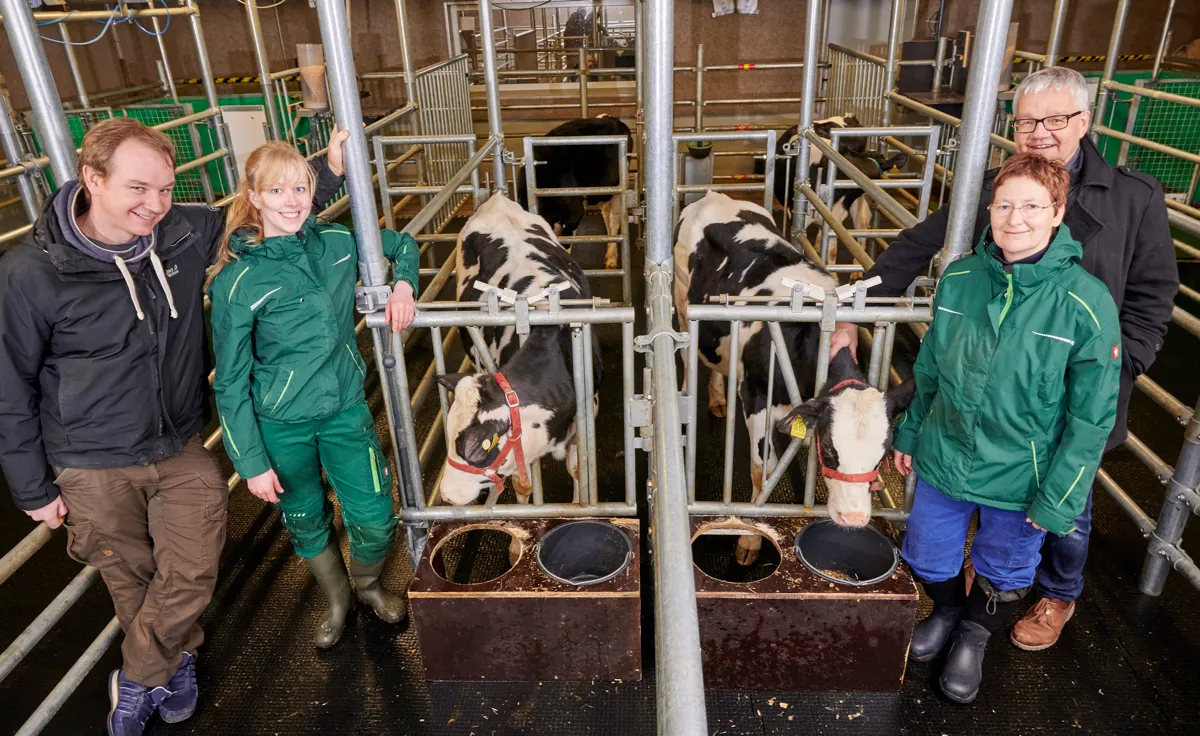Most of us know that cattle produce the greenhouse gas methane when they burp, a surprisingly significant contributor to climate change.
But there's another way that cows further the crisis: every time they relieve themselves, a large amount of ammonia is released.
While ammonia doesn't directly contribute to rising temperatures, it is a dangerous emission that can contaminate water supplies and local soil, damaging the health of humans, animals, and the wider ecosystem. But when ammonia gets into soil, microbes convert it into nitrous oxide – the third-most abundant greenhouse gas.
Many researchers have focussed on changing a dairy cow's diet in the hopes of reducing the production of these gases. Earlier this year, researchers found thatfeeding cows seaweed could reduce their methane emissions by more than 80 per cent. But to address the ammonia problem, scientists have had to look outside the box... and into the bowl.
“It’s usually assumed that cattle are not capable of controlling defecation or urination,” said animal psychologist Dr Jan Langbein. “Cattle, like many other animals or farm animals are quite clever and they can learn a lot. Why shouldn’t they be able to learn how to use a toilet?”
Read more about cattle and climate change:
- Global methane emissions have reached the highest levels on record
- The dirty truth about eating green
As it turns out, cows can be potty-trained just like our children. Langbein is a co-author on a new study that shows how 16 young calves underwent toilet training and within a few short weeks, 11 had successfully learned how to use their special bathroom, called the MooLoo.
This success rate, the researchers claim, showed a level of performance "comparable to that of children and superior to that of very young children."
In order to train the calves to use the cow-mode, the team came up with a number of experiments. First, they kept all the cows in the MooLoo and rewarded every urination there with food. This helped establish the livestock lavatory as the place to go.
Then, they were released onto the farm, but were able to access the MooLoo should they choose to. This would test whether the cows could exhibit the self-control and awareness shown when humans and other animals are toilet-trained.
"For urination, toileting requires self-control and coordination of a complex chain of behaviours including awareness of bladder fullness, overriding of excretory reflexes, selection of a latrine and intentional relaxation of the external urethral sphincter," wrote the researchers in their paper, which was published in theCurrent Biologyjournal.
The researchers wanted to discourage the calves from peeing anywhere else, so decided to punish – very gently – any accidents outside the little bull's room.
“As a punishment we first used in-ear headphones and we played a very nasty sound whenever they urinated outside,” said Langbein. “We thought this would punish the animals—not too aversively—but they didn’t care. Ultimately, a splash of water worked well as a gentle deterrent.”

Using their method of toilet training, the researchers say they could capture around 80 per cent of all cattle urine, which could lead to a 56 per cent reduction of ammonia emissions due to cows.
The research is a way off being used in all dairy farms around the world, as the team will next look at scaling up their training to a whole herd.
"To do this, we must first automate the whole training procedure and adapt it to the conditions on the farm," said Langbein. But, he hopes that "in a few years all cows will go to a toilet".
